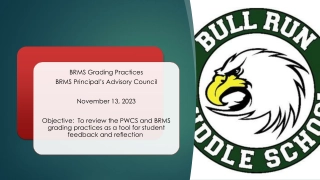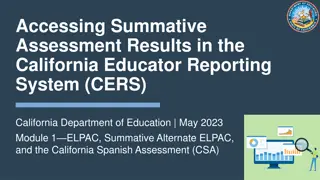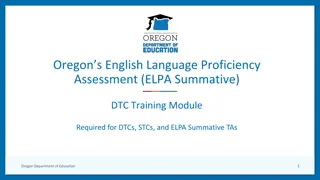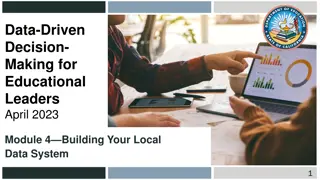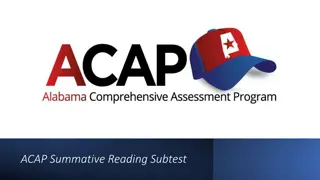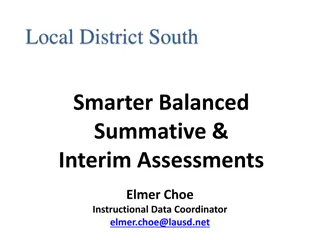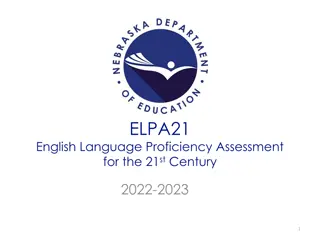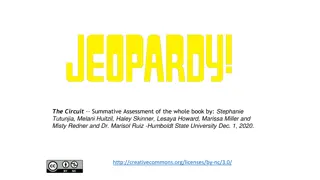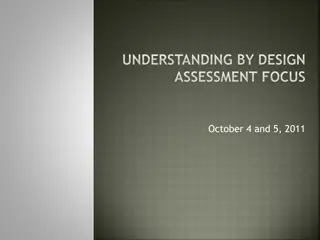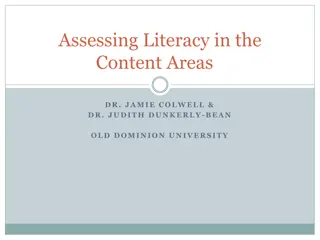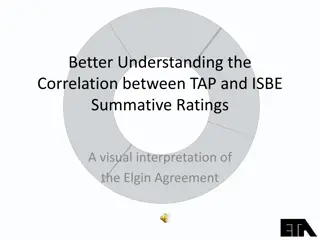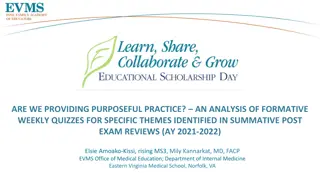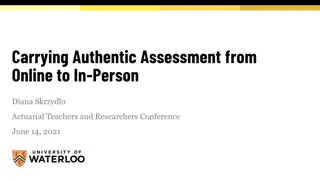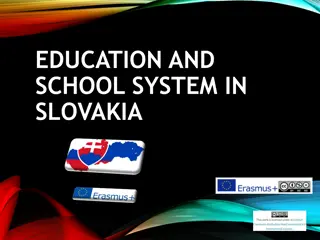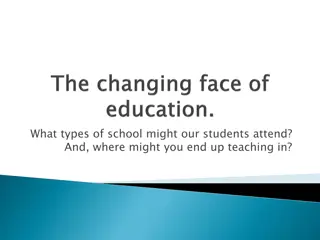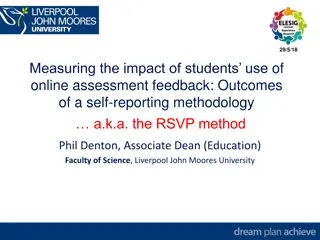
Uncovering the Impact of Summative Assessment in Education
Delve into the nuances of summative assessment in schools with key questions on national, regional, and local data usage, benefits, and dangers. Explore examples, National Curriculum level assessments, and strategies to link formative and summative assessments, along with reading recommendations for further insight into educational assessment practices.
Download Presentation

Please find below an Image/Link to download the presentation.
The content on the website is provided AS IS for your information and personal use only. It may not be sold, licensed, or shared on other websites without obtaining consent from the author. If you encounter any issues during the download, it is possible that the publisher has removed the file from their server.
You are allowed to download the files provided on this website for personal or commercial use, subject to the condition that they are used lawfully. All files are the property of their respective owners.
The content on the website is provided AS IS for your information and personal use only. It may not be sold, licensed, or shared on other websites without obtaining consent from the author.
E N D
Presentation Transcript
Summative assessment, data and schools Neil Denby
Key questions What happens nationally, regionally and locally to summative data? How do individual teachers use summative data to inform planning and progression What are the benefits of summative assessment and what are the dangers?
Summative assessment How many different examples of summative assessment can you identify?
The National Curriculum levels When and how are assessments made against the National Curriculum (NC) levels in your placement schools? How is this information used in your department?
Linking formative and summative assessment Helping pupils recognise the standards they are aiming for: Show what a good version looks like Consider why it is successful and what contributes to that judgement Provide suggestions of what to do or include in order to reach similar standards Explain what to do to reach the next stage of learning
Teaching strategies Modelling Showing good and not so good examples against marking criteria Teacher-led discussion about pupils work against criteria Peer and self-assessment against criteria
Formative use of summative assessment Understand and make differentiated provision for the range of attainment in the class Adjusting teaching plans as necessary Develop specific intervention strategies Set and review curriculum targets
Reading to support the session Carless, D. (2006) Developing synergies between formative and summative assessment , Paper presented at the British Educational Research Association Annual Conference, University of Warwick, 6 9 September Harlen, W. and Deakin Crick, R. (2002) A systematic review of the impact of summative assessment and tests on students motivation for learning , in Research Evidence in Education Library (London: EPPI-Centre, Social Science Research Unit, Institute of Education, University of London)
Follow-up task Using the existing summative data for your classes, reflect upon the way this has informed your planning

